- Inmarsat Mini-C LRIT
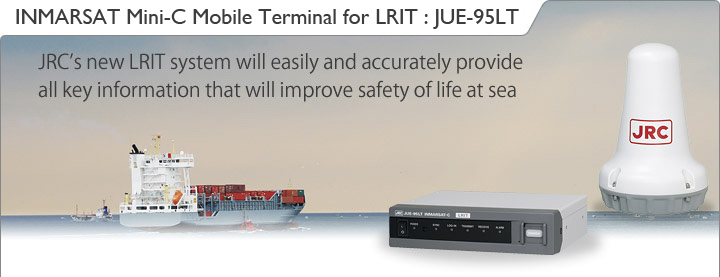
Our solutions
This is to advise the requirements and solutions JRC offers for LRIT, including practical notes.
Long Range Identification and Tracking (LRIT) is a global monitoring system of the ship's movements. Ships are required to fit a system that automatically transmits information, such as identity, position and the date and time of the position at time of transmission. Ships are required to have such a system installed on the first radio inspection day after 31 December 2008, according to MSC.202 (81).
The following ships (engaged on international voyages) are required to implement LRIT:
- All passenger ships, including high speed craft
- Cargo ships, including high speed craft of 300 gross tonnage and above
- Mobile offshore drilling units
Note that even if your Inmarsat C terminal currently not requires LRIT operation, updating software is highly recommended in case of possible future usage.
I've no Inmarsat C onboard. How do I comply with LRIT?
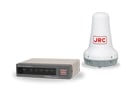
JUE-85
Inmarsat C
- complete Inmarsat C solution with LRIT integrated as standard
Available
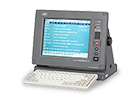
JUE-87
Inmarsat C
- complete Inmarsat C solution with LRIT integrated as standard
Available
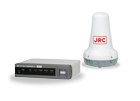
JUE-95LT
Inmarsat Mini-C Mobile Terminal for LRIT
- stand alone LRIT solution
Available
I've an existing JRC Inmarsat C onboard. How do I comply with LRIT?
| This I have | Solution |
|---|---|
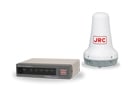 |
JUE-85 solution Upgrade kit 7ZZCS0074
|
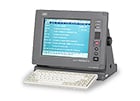 |
JUE-87 solution Available |
Features
The JUE-95LT is a simple-to-install stand alone system that will easily and accurately transmit key information to improve the safety of life at sea.
Flexible Installation Approach
The JUE-95LT system has the same cable management philosophy resembling all other Inmarsat products that JRC is offering, allowing for an easy installation as only a single coax cable is used between antenna and terminal. Both are very compact and can be easily installed on any size and type of vessel.
LRIT background
The Long-Range Identification and Tracking (LRIT) regulation will apply to the following ship types engaged on international voyages:
- All passenger ships including high speed craft,
- Cargo ships, including high speed craft of 300 gross tonnage and above, and
- Mobile offshore drilling units.
All vessels of 300 gross tonnage and above on international voyage will need to be compliant with LRIT regulations.
Those ships operating exclusively in coastal Sea Area A1 and fitted with an Automatic Identification System will be exempt, while ships operating in near-coastal Sea Area A2 not fitted with Inmarsat C GMDSS will be required to fit a compliant terminal. Ships operating in polar Sea Area A4 above 70 degrees latitude will require a non-Inmarsat terminal that operates in conjunction with a low-earth orbit Communication Service Provider (CSP) approved by the Flag in conjunction with its appointed Application Service Provider (ASP).
A phased approach to the implementation of the regulation will allow for compliance not later than the first radio survey after 31 December 2008 or in the case of ships operating in Sea Area A4 not later than the first radio survey after 1 July 2009.
The terminal must be capable of being configured to transmit the following minimum information set in an Automatic Position Report (APR):
- The identity of the ship
- The position of the ship, and
- The date and time of the position.
In addition, the terminal must be able to respond to polling for an on-demand position report and be able immediately to respond to instructions to modify the APR interval to a frequency of a maximum of one every 15 minutes. APR's will be transmitted as a minimum 4 times per day to a National Data Centre (NDC), a Cooperative Data Centre (CDC), or a Regional Data Centre (RDC) nominated by the Flag (collectively "DC's").
For more info, visit lrit.com
Specs
| Model | JUE-95LT | |
|---|---|---|
| IMO type approved | ✓ | |
| Class of Inmarsat C MES | Class 1 | |
| Terminal and antenna | ||
| Model - terminal | NTF-782LT | |
| Model - antenna | NAF-742LT (including pole mounting bracket) | |
| Frequency | TX 1626.5MHz - 1646.5MHz RX 1530.0MHz - 1545.0MHz |
|
| Channel spacing | 5KHz | |
| G/T | -23.7dB/K minimum at 5° angle | |
| E.I.R.P. | +7 to +16dBW | |
| Modulation | TX and RX: 1200 symbols/sec 1) BPSK | |
| Data rate | TX: 600bps RX: 600bps |
|
| Antenna | type: helical pattern: hemisphere (non directional) polarisation: right hand circular |
|
| Transmission message | up to 8kb | |
| Message storage | 80kb (Inmarsat C 40kb, ECG 40kb) | |
| Power supply voltage | DC 24V (+30% -20%) | |
| Power consumption | TX 75W, RX 15W (terminal and antenna) | |
| Ambient condition | antenna: -35°C +55°C terminal: -15°C +55°C |
|
| Preservation temperature | -40°C +80°C | |
| Relative humidity | +40°C up to 95% | |
| Icing | up to 25mm (antenna) | |
| Precipitation | 100mm/hour (antenna) | |
| Wind | up to 100 knots | |
| Vibration | as specified by Inmarsat | |
| Optional items | ||
| 2) Power supply (AC/DC) | NBD-577C | |
| 2) Power supply (AC/DC) | NBD-843A | |
| Earth bolt (for antenna) | MTL318538A | |
1) Binary Phase Shift Keying
2) Check power requirements with ship’s authorities
Antenna

1ploe mounting bracket is included as standard
Terminal

What's Standard in the box?
- Antenna
- Terminal
- Antenna installation parts
- Terminal installation parts
- Cables
- Spare parts
- Manual (English)
Cables
| Which cables? | |
|---|---|
| Antenna to terminal | 30 m |
| Power supply to terminal | 2 m |
All specifications are subject to change without notification.
All specifications are subject to change without notification.
Discontinued Products
Please note that some of the contents may have been changed or are no longer available.Please be aware of this in advance.


